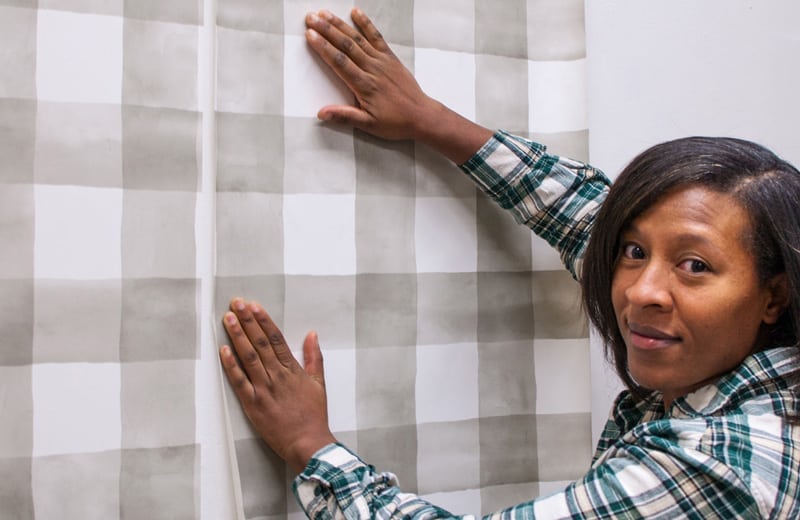You have your wallpaper, you’ve gathered your tools and adhesive, and you’re ready to start hanging. Should you paste the wall or paste the paper itself? Does it matter? Will your installation fail if you opt for one method instead of the other?
Paste the Paper
Applying adhesive to the back of the paper is the traditional installation method for wallpaper. Wallcoverings manufactured with paper, cotton, or vinyl substrates can absorb moisture and expand when pasted. If applied directly to the wall, the material might bubble and wrinkle. Instead, these papers need to be “booked” before hanging to allow the paper time to relax off the wall. “Booking” is the method of folding the wallpaper in on itself after pasting to allow it to relax and to keep it from drying out. Wallpaper is typically booked for around 5 minutes, though your paper’s instructions may have a more specific recommendation. Once booked, the folded wallpaper can be moved the wall for hanging.
Hanging Tips
- Use a 3/8-inch nap roller to ensure even coverage of the adhesive on the back of the paper.
- Make sure enough adhesive is applied to the edges of the wallpaper. A lack of adhesive can cause seams to open when drying.
- Follow the manufacturer’s recommended booking times before hanging.
- Clean up any excess paste from your table before pasting your next sheet.
Paste the Wall
Many modern wallpapers are manufactured with a non-woven substrate. This non-woven material is a mix of synthetic and natural fibers that allows the paper to remain dimensionally stable when wet. This means non-woven wallpapers can be applied directly to the wall, and the moisture in adhesive won’t cause the wallpaper to swell and expand.
Paste the wall installations are often preferred by DIYers with little or no experience with the traditional paste the paper method. By applying paste and wallpaper directly to the wall, there’s no need for sprawling pasting tables. This is a big advantage if your work area is short on space. Additionally, non-woven wallpapers tend to be durable, washable, and more forgiving to work with. Excess paste can be washed away easily without fear of staining or discoloring the paper.
Hanging Tips
- Use a 3/8-inch nap roller to ensure even coverage of the adhesive on the wall.
- Work a section at a time. Adhesive applied too far in advance may dry out before wallpaper can be hung.
Which Method to Choose?
In most cases, the question of paste the wall vs paste the paper can be resolved with a quick check of the hanging instructions. Your wallpaper’s instruction sheet should provide details that include any necessary prep work, recommended adhesive, and installation method.

In the event that the instruction sheet makes no recommendation, or if you are unable to find the instructions, it’s generally safer to paste the wallpaper.
Recommended Adhesive:
- PRO-880 Ultra Clear Strippable
- Ideal for most types and weights of wallpaper, including non-wovens, PRO-880 provides excellent tack and exceptional ease-of-use. PRO-880 applies easily with a paint roller, provides extra slip for easier positioning and pattern matching, and the extended open-time is perfect for use with paste the wall applications. PRO-880 also promotes strippability, helping your wallpaper remove more easily when it’s time to redecorate.
With the wide variety of materials available, always check the manufacturer’s hanging instructions for a recommended adhesive. If you need help selecting an adhesive for your project, please Contact Us.







